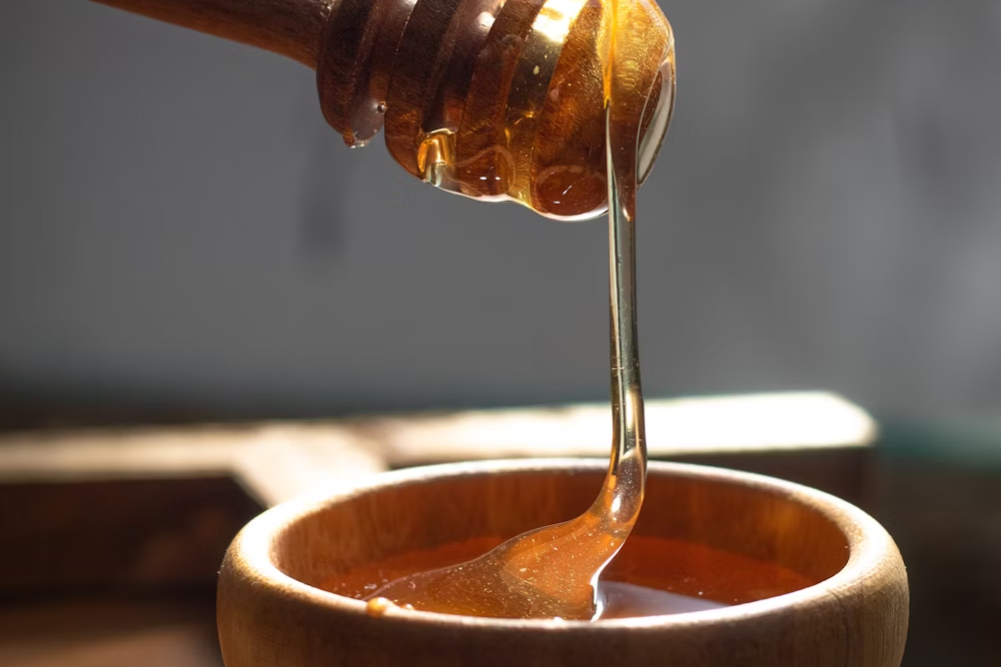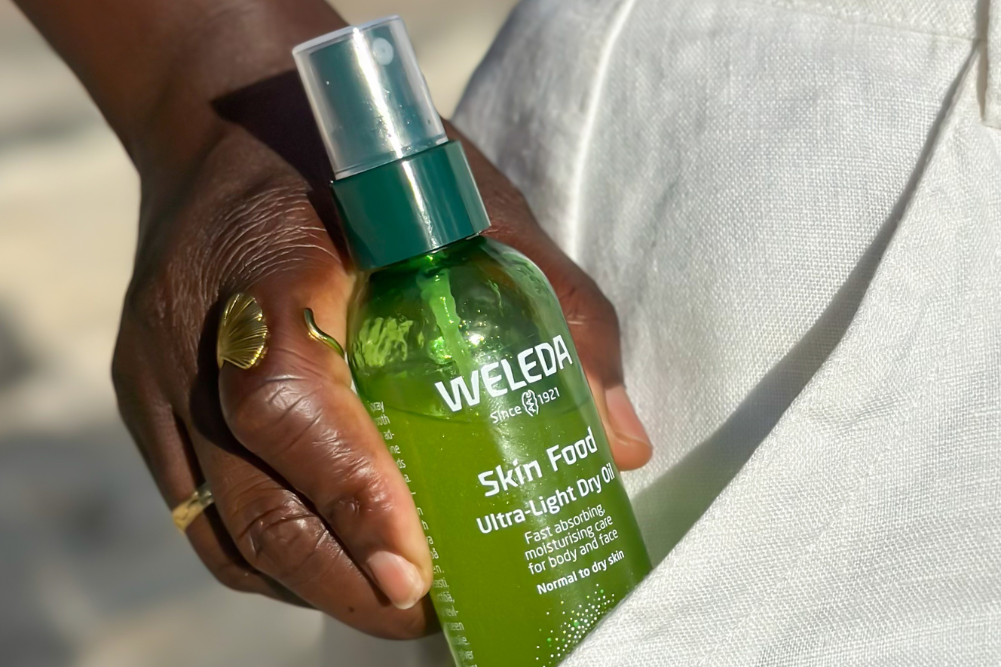Is your hair salon truly eco-friendly?
With the rise of the eco movement has come a new breed of salon: beauty and wellness sanctuaries that promise to primp and pamper sans toxins, leaving you with clear skin and a conscience to match.
Many mainstream salons are adopting sustainable practices, however a true environment- and people-friendly salon must fulfil stringent criteria that go well beyond a recycling program and products labelled as organic. From light fittings to towels, and moisturiser to makeup, everything matters when it comes to going green from the ground up. And, according to the law, what’s promised must be delivered.
If Google is your detective of choice when hunting down a truly authentic green salon near you in Australia, there’s a good chance you’ll come up empty handed — or find yourself compromising on some of your eco checklist (if you know exactly what you’re looking for). However, there are health-minded beauty warriors who are setting up shop and strictly following environmental and health guidelines, as set by the Australian Competition and Consumer Commission (ACCC), which takes businesses’ green promises very seriously.
Conform or be fined
“Environmental claims come in a wide range of forms, including statements about environmental sustainability, recycling, energy and water efficiency, or impact on animals and the natural environments,” says an ACCC spokesperson. “Businesses must not mislead or deceive consumers, or make false or misleading representations.”
Those who promote themselves as authentically eco-minded must walk the talk or face steep penalties. Also, customers who have been duped (and harmed) by misleading promises can take legal action against those businesses that are in breach of the guidelines, which fall under the Competition and Consumer Act 2010.
Eco entrepreneur and Australian green beauty leader Jamila El Maroudi, who developed Mira’s Hand, a certified organic Moroccan hammam spa range, has researched the green beauty and salon industries extensively and says the consequences for business owners who greenwash are very real. She says referring to salons as green or eco can be “potentially misleading” for the consumer. “Many companies have been fined by the ACCC for greenwashing: misrepresenting what the terms mean or lacking transparency or accuracy in their claims and activities,” she says.
“Many businesses seek to improve their branding and differentiate their businesses in paying for an independent certification by completing an annual or event audit to claim ‘carbon neutral’ status and practices,” El Maroudi adds. “This means they have tried to minimise or entirely offset the emissions — materials, waste, energy, water etc — consumed and produced by the building of the salon, through to the operation of the salon and its staff.”
While such moves are vital steps in the right direction for the sake of the planet’s long-term health — and that of clients — the green philosophy must filter throughout every aspect of the salon to earn it the green title.
Eco product watch
A golden label claiming organic ingredients doesn’t automatically take a salon’s status to environmentally friendly and health conscious. Scrutinising the products used at hair and beauty salons is a must if supporting the green movement is important to you. Synthetic combinations not only hurt nature once washed down the sink, they also harm salon clientele’s wellbeing. What sits on the skin or scalp enters the bloodstream and, more often than not, causes disharmony within the body, whether symptoms arise or not.
It’s imperative that mainstream eco beauty products are certified by official regulatory bodies, such as Ecocert, which follow strict — although not perfect — guidelines, to which companies must adhere if they wish to emblazon their product with a trusted seal. Such rules stipulate that the product must be derived from natural sources through means that do not use artificial or harmful pesticides, or other chemicals.
Certified doesn’t guarantee purity
It’s worth knowing that guidelines set by bodies such as Ecocert only require a minimum 10 per cent of all ingredients be derived from organic farming. Because a certified product is labelled organic it doesn’t mean 100 per cent of its ingredients are organic — and only 95 per cent must come from natural sources (find out more at ecocert.com/en/natural-and-organic-cosmetics). In short, even those products that fall under authentic green guidelines aren’t guaranteed to be pure.
Unless you’re sourcing trusted ingredients from your kitchen pantry, as great grandma most likely did, there’s never any guarantee that what’s being used on your skin and hair is without risk. Rather, you can just do the best you can in a world that’s polluted with synthetics and chemicals. In 2013, unfortunately, perfection is almost an impossibility, especially if you like to be pampered within the walls of a professional salon.
“The general philosophy of those in the industry is to leave the world in a better condition than you found it, take no more than you need, try not to harm and, in the beauty and wellness industry, simply use only products on your skin that you can safely ingest,” El Maroudi says.
Yet, despite the negatives, there is peace of mind to be had. Certified green salons are a world away from their conventional counterparts: salons and spas that rely on hormone-disrupting and cancer-forming chemicals that do more damage than good to long-term health and beauty — all in the name of saving dollars and preserving product shelf life.
Being aware of the issues doesn’t mean it’s time to ditch your favourite day retreat or beloved therapist, though, as many are becoming more conscious of what is in the products and services they offer. It’s about arming yourself with knowledge and not being afraid to ask questions that matter to your health — and the environment.
Knowledge is key
Here are some vital clues to look out for before booking into your salon of choice:
- Ammonia-free hair colours may sound like a toxic-free way to fade out greys, yet it’s important to not simply ask what’s been taken out of a product but also what ingredients remain. While on-trend eco companies are using more environmentally friendly ingredients, such as vegetable-derived dyes, it’s worth noting that these still may include additives that could cause irritation, even if considered “green”. After all, the purpose of going green is for the sake of the planet’s health and yours.
- Fragrance derived from essential oils is considered a natural source and, while they may cause reactions in sensitive people (as any natural product can do), it’s synthetic fragrances that should sound alarm bells. These are hazardous to the environment and are known to pose major health risks when in contact with the skin. If a salon is claiming green status and is using and selling fragranced products, it’s best to steer clear and question their eco certification.
- Coal tar dyes are known carcinogens, made from bituminous coal. Found in dandruff and psoriasis shampoos, anti-itch creams, hair dyes and other cosmetics, coal tar dye can also be labelled as p-phenylenediamine and colours listed as CI, FD&C, or D&C. Never be afraid to ask to see the label on any product that’s going to be used during your session or treatment — it’s your right.
- If you’re keen to kick the kinks, a green salon may not be an option for your hair wants. While kinder-to-the-environment salons will opt for formaldehyde-free products to straighten hair, few meet true eco standards. The healthiest hair-straightening treatments won’t contain ammonia, formaldehyde, thioglycolates, parabens, phthalates, genetically modified organisms or any animal byproducts.
- Sodium laureth sulfate (SLES), sodium lauryl sulfate (SLS), petrolatum, triclosan, polyethylene glycol (PEG), phenoxyethanol, TEA (triethanolamine), DEA (diethanolamine) and MEA (monoethanolamine) are also other potentially harmful ingredients that shouldn’t be found within the walls of an authentic green hair or beauty salon.
- Hormone-disrupting parabens can be listed as methyl, propyl, butyl and ethyl paraben and are found in 75–90 per cent of all products. It is a known medical fact that oestrogen stimulates breast cancer and anything absorbed through the skin may be as high as 10 times the concentration of an oral dose. Parabens are found in many products, from lotions, scrubs and conditioners to shampoos and makeup.
- Plastic in hair products is a big eco no-no but can be found widely in mainstream salon styling formulations. Used to give hair hold, PVP (polyvinylpyrrolidone) is environmentally toxic and a major health concern. Green salons should opt for natural alternatives such as cornstarch, which give hold without the hazards.
A welcome trend
As consumers become more eco-savvy and start to really understand that what they put on their hair and skin can be detrimental, the Australasian beauty industry is slowly changing to meet such expectations. From Sydney to Perth and Auckland to Wellington, green business leaders are heeding the call and creating supply for the increasing demand.
Dr Zara Celik of Melbourne’s Amara Wellness Centre is one such leader who is marrying wellness and beauty with high eco standards. Her holistic approach ensures any product that touches the body is completely natural and the spa itself is environmentally friendly. Her attention to wellbeing and green details is a welcome trend among spa goers with a conscience, with a loyal clientele not only becoming regulars but also spreading the word among friends.
“People are more conscious and aware of what is going on in their environment — they are willing to do their bit to save and protect the environment for the future generation. (This means) people are now becoming selective and choosing to go to green spas where the environment is healthy, safe and toxin-free,” Celik says.
“The products touching the body are extremely important, including the linens and the cleaning products used within the spa for cleaning and disinfecting surfaces. The products used for the cleaning of the linens must also be 100 per cent natural.”
She adds: “The green spa should be promising and provide a healthy environment for guests and staff members; and focus on total wellbeing of the individual holistically while providing tranquillity and relaxation.”
Small steps toward big changes
British expat Stevie English, an in-demand hairdresser who works extensively from his Sydney salon and for high-profile fashion magazines such as Marie Claire and Oyster, is another Beauty leader who is setting trends with an eco conscience. In a recent article he published on industry website prohairstylist.com.au, English admits that, while most hair salons aren’t waving the green flag, there is hope among his peers.
“Hairdressing salons are not known for being green,” he says. “Our energy consumption is high, to say the least … when you think about air-conditioning in summer, heating in winter, hairdryers going all day, lighting, towel washing and drying … Most salons have huge hot-water tanks and they are being heated 27/4 — we are environmental mini disaster zones.”
While doing away with old habits and ingrained practices takes time in an industry reliant on massive energy consumption and chemical overdosing, the tipping point can only come with awareness and then steps, regardless of how small, that head towards a healthier and more sustainable future.
It’s the customer who can play a key role in encouraging their local salon to become more eco-aware, say many stylists, who, more often than not, listen to what the customer wants, especially if it’s long-term business they’re after. Moreover, anything that is healthier for the customer and the environment is healthier for the stylists, too, who have their hands in the salon products day in, day out.
English says small acts, especially if taken up by the majority, can lead to big changes. “(Use a) Save the Dolphins bucket,” he says. “Have a bucket in the salon, scrape any unused colour product into it, then throw it in the bin (to be disposed of properly); it stops it going down the drain. Small measures — but small steps are what make the big one easier.”
Salons can also benefit financially from getting their green on, with a UK study conducted by the Centre for Retail Research revealing consumers are prepared to pay an average premium of 44 per cent for green products.
Eco spas and salons are indeed in town and, with your help, it seems they’ll stick around.
Shannon Dunn is a writer, eco beauty editor and EFT practitioner. Find out more at ecobeautyeditor.com and shannondunn.com.au.







